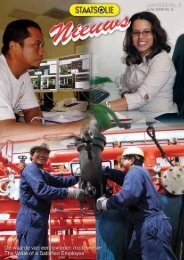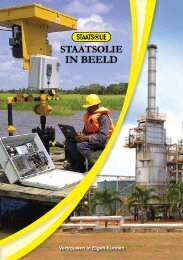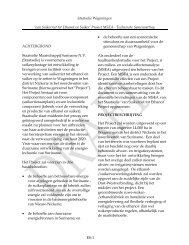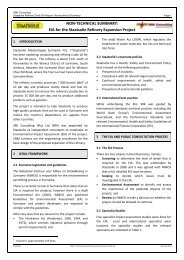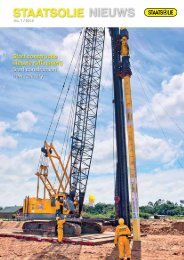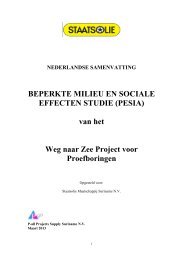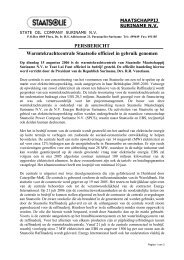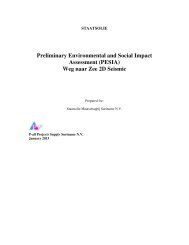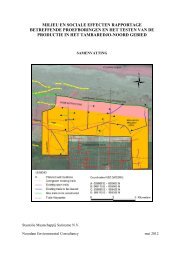concept EIA-rapport - Staatsolie
concept EIA-rapport - Staatsolie
concept EIA-rapport - Staatsolie
Create successful ePaper yourself
Turn your PDF publications into a flip-book with our unique Google optimized e-Paper software.
SRK Consulting: Project No: 439414 <strong>Staatsolie</strong> Pipeline <strong>EIA</strong> – Draft <strong>EIA</strong> Report Page 86<br />
6.9.2 Conceptual Decommissioning Plan<br />
The objective of the Conceptual Decommissioning Plan is to provide recommendations for the<br />
decommissioning of the pipeline and rehabilitation of the area at the end of the operational lifespan<br />
of the project, to achieve sustainable land use conditions and avoid or minimise costs and long term<br />
liabilities to <strong>Staatsolie</strong>.<br />
The method of decommissioning is likely to vary between above-ground and underground pipeline<br />
sections. As such, it is expected that:<br />
• Above-ground sections of the pipelines will be removed upon decommissioning. This is expected<br />
to involve the depressurising and purging of the pipeline, physical removal of the pipe and all<br />
associated structures and rehabilitation of the pipeline corridor. Maintenance of the corridor is<br />
discontinued; and<br />
• Underground sections of the pipelines will be abandoned in situ, as international best practice<br />
recognises that removing pipelines from the ground is unlikely to be a commercially or<br />
environmentally viable option (APIA, 2009). This is expected to involve the physical<br />
disconnection, purging, cleaning and sealing (capping) of the pipelines. The pipe would then be<br />
left to corrode and biodegrade in situ 39 .<br />
The plan recommends measures to implement during the following three phases of the pipelines<br />
project:<br />
• Operations Phase: These measures relate to the minimisation of closure costs (e.g. through<br />
ongoing containment of pollutants) and the successful planning of decommissioning.<br />
• Decommissioning Phase: These measures are applicable during the decommissioning of the<br />
pipelines project or individual pipelines to minimise residual impacts on the environment.<br />
• Post closure: These measures include potential monitoring requirements, where appropriate,<br />
following the decommissioning of the pipelines project or individual pipelines to monitor any<br />
residual impacts on the environment post closure, based on information available at the time of<br />
compiling the plan.<br />
These measures are presented in Table 6-17.<br />
39 Any ground subsidence due to the long term structural deterioration of a pipeline abandoned in place is considered unlikely<br />
to be a critical issue by the Canadian Association of Petroleum Producers, as a structural failure due to corrosion may take<br />
many decades and significant lengths of pipeline would not collapse at the same time. Ground subsidence would be negligible<br />
for pipelines up to 232.9mm in diameters. Filling with an inert material may be appropriate at critical locations (e.g.<br />
infrastructure crossings). This will need to be determined in consultation with the relevant authorities at the time of<br />
decommissioning and take into account the long term plans for the pipeline (APIA, 2009).<br />
REUT/DALC 439414_<strong>Staatsolie</strong>Pipeline<strong>EIA</strong>_Draft <strong>EIA</strong> Report_Final June 2012




